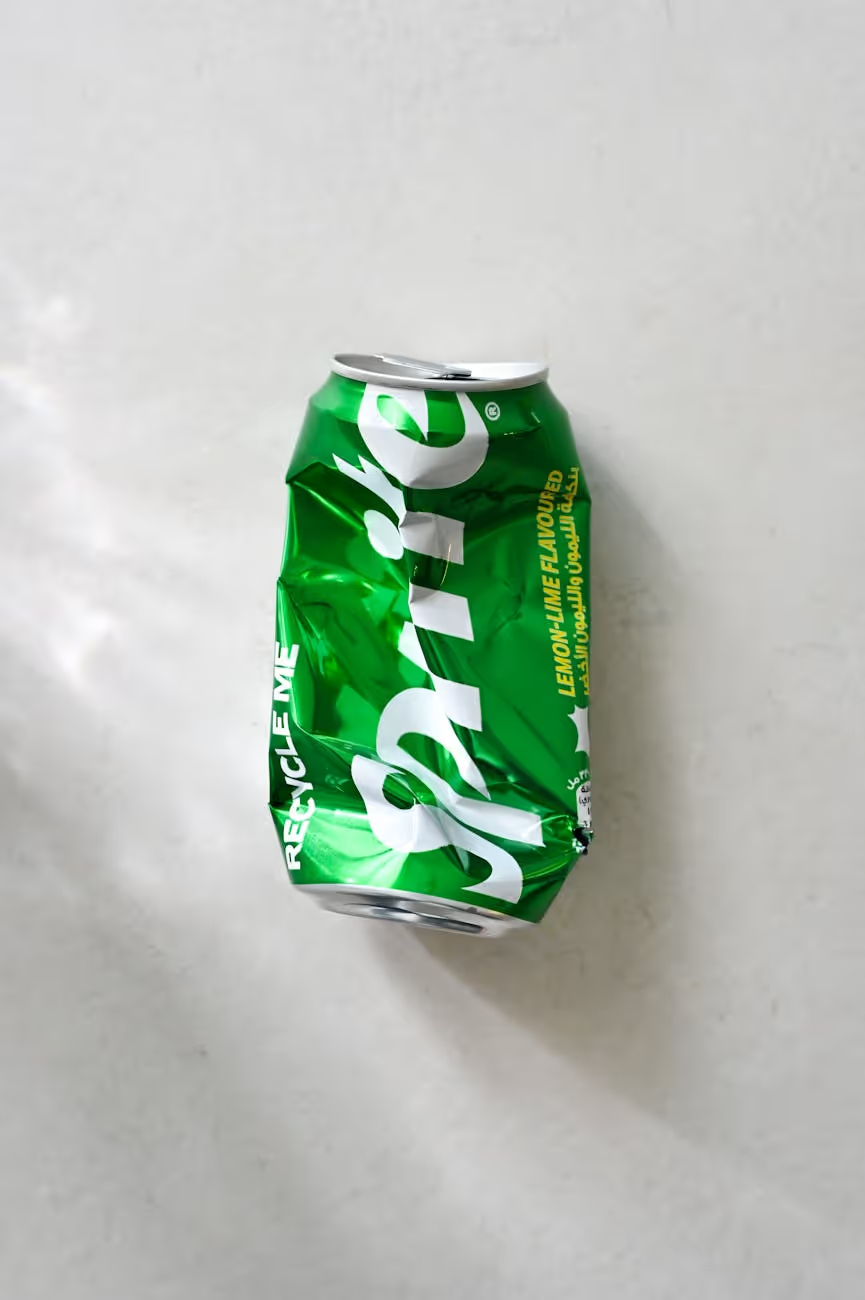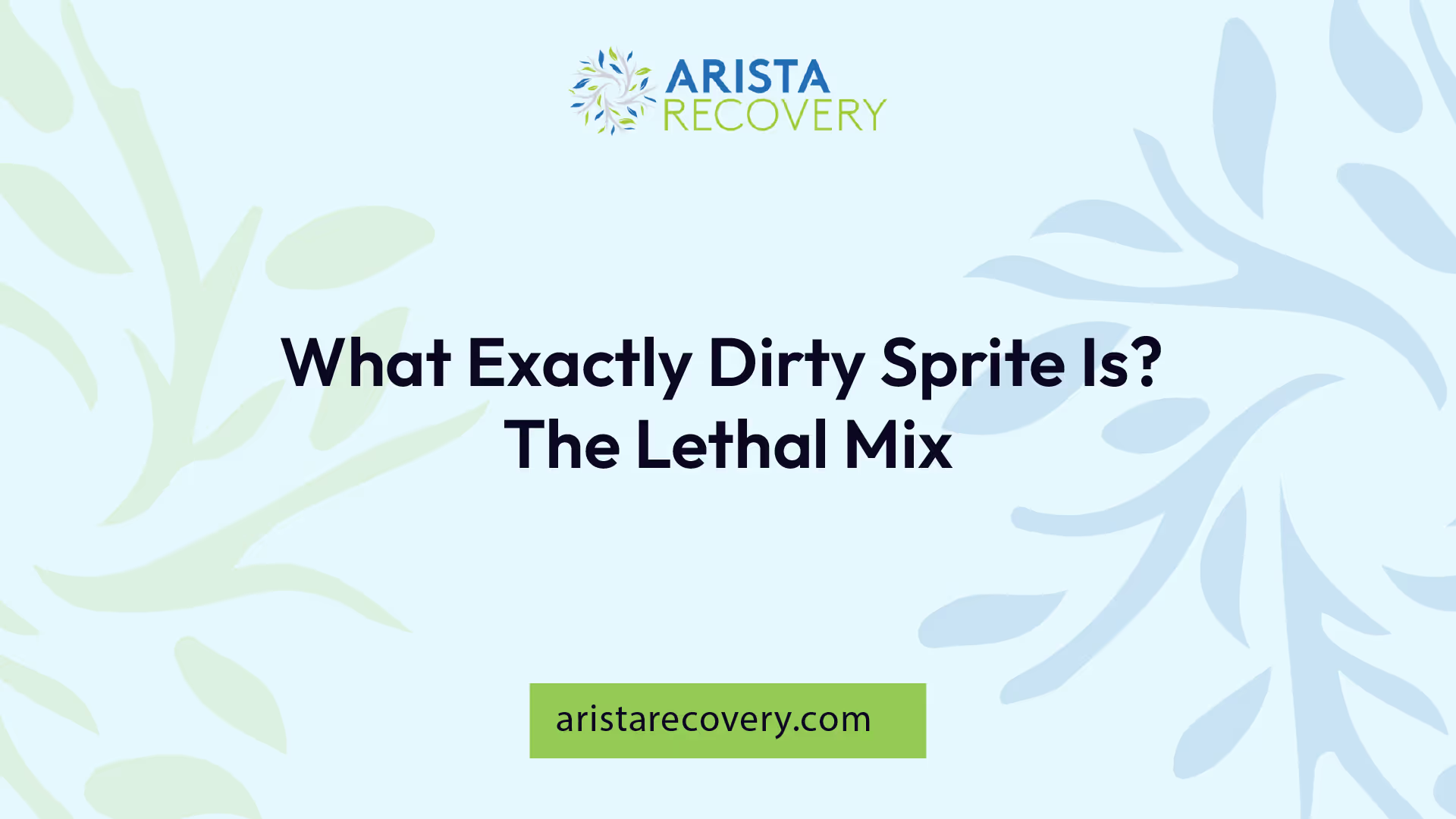What Exactly Dirty Sprite Is? The Lethal Mix

Understanding Dirty Sprite
Origins and Popularity
Dirty Sprite, often referred to as Lean, is a popular recreational drug that has become a notable part of modern culture. The concoction originated in Houston during the 1960s and gained traction, particularly among young adults, due to its association with hip hop culture, especially in the Southern United States [1].
The rise of Dirty Sprite in social settings, such as parties, has further cemented its presence in youth culture. It is primarily consumed by teens and young adults, pulling significant influence from music and entertainment industries, which depict it as a symbol of relaxed social gatherings [2]. Its widespread popularity has brought about discussions regarding the risks associated with using such substances.

Composition and Preparation
Dirty Sprite is essentially a mixture of prescription-grade cough syrup that contains an opioid and an antihistamine. This syrup is combined with a carbonated soft drink, often Sprite, and is sometimes enhanced with sugar candies. The final product looks refreshing, which can mask its dangerous effects [1].
Here’s a simple breakdown of the basic ingredients:
IngredientDescriptionCough SyrupContains opioid (like codeine) and antihistamineCarbonated Soft DrinkCommonly Sprite; provides sweetness and fizzSugar CandyOften added to enhance flavor
Despite being perceived as a casual beverage, Dirty Sprite poses significant health risks. Serious side effects can include slowed heart rate, breathing difficulties, seizures, dental decay, hallucinations, and impaired vision [2]. Parents and guardians are encouraged to be vigilant regarding substances like cough syrup, as they can pose a potential for abuse when prepared in this manner.
Health Risks of Dirty Sprite
Dirty Sprite, commonly known as lean, poses significant health risks, particularly regarding addiction and its physical and mental effects.
Addiction and Dependence
Lean addiction can develop relatively quickly, primarily due to the euphoric effects produced by its key ingredient, codeine. Opioids such as codeine influence the brain's reward system by releasing dopamine, resulting in a temporary feeling of euphoria. This sensation is highly sought after, leading users to repeatedly consume the substance. Over time, this cycle can create both physical and psychological dependence, compelling individuals to continue usage despite experiencing negative consequences [1].
The addictive nature of lean is illustrated in the following table, which highlights the main factors contributing to addiction:
AspectImpact on AddictionEuphoriaUsers seek repeated feelings of pleasureToleranceIncreased use required to achieve the same effectsWithdrawal SymptomsPhysical and psychological cravings when not usingCo-occurring DisordersUsers may have existing mental health issues
Physical and Mental Effects
The consumption of Dirty Sprite leads to numerous physical and mental health effects. Lean is considered a hard drug due to the potent nature of codeine, which can induce various impacts on the body and mind, including:
Additionally, mixing codeine with other substances, such as alcohol or antihistamines, elevates the risks and potential for harmful interactions [2].
Understanding the health risks associated with Dirty Sprite is crucial for informing individuals about its potentially lethal consequences.
Signs of Lean Addiction
Recognizing the signs of Lean addiction is crucial for understanding the extent of its impact. The behavioral changes and withdrawal symptoms associated with this form of substance dependence can affect many aspects of an individual's life.
Behavioral Changes
Individuals struggling with Lean addiction may exhibit a variety of behavioral changes. These signs can indicate an escalating reliance on the substance and potential withdrawal from typical social engagement. Common behavioral changes include:
Behavioral ChangesDescriptionMood SwingsSudden shifts in mood ranging from euphoria to irritability.AnxietyHeightened feelings of anxiety and restlessness.Cognitive ImpairmentDifficulties with focus, memory, and decision-making.Impaired JudgmentPoor decision-making often leading to risky behaviors.Emotional NumbnessA lack of emotional response to situations that would typically elicit feelings.Social IsolationWithdrawal from friends and family, resulting in loneliness.
Signs of Lean addiction highlight the complexity of its effects on emotional and social health. As continued use can drive these behavioral shifts, it's essential to note these changes in oneself or loved ones.
Withdrawal Symptoms
When an individual who is addicted to Lean attempts to stop using it, they may experience a variety of withdrawal symptoms. These symptoms can be physically and emotionally intense, emphasizing the seriousness of the addiction:
Withdrawal SymptomsDescriptionSevere AnxietyIncreased feelings of anxiety and agitation.InsomniaDifficulty falling or staying asleep.Physical DiscomfortSymptoms such as body aches or stomach cramps.CravingsIntense urges to consume Lean again.SweatingExcessive sweating without physical activity.TremorsUncontrolled shaking or trembling.
Withdrawal symptoms can be severe and may require professional help in managing. Recognizing these signs in oneself or others is crucial for initiating appropriate interventions. Understanding the physical and mental health effects associated with Lean can help in identifying the need for treatment and support.
Impact on Relationships
The effects of Dirty Sprite, also known as Lean, extend beyond physical health issues and deeply impact social interactions and finances. Understanding these facets reveals the broader implications of this substance on individuals and the people around them.
Social Effects
The misuse of Dirty Sprite can significantly strain relationships due to behavioral changes associated with its physical and psychological dependence. Individuals may experience mood swings, irritability, and withdrawal from social activities. These changes can lead to misunderstandings, conflicts, and distancing in both personal and professional relationships [1].
Social ImpactDescriptionRelationship StrainIncreased conflicts and misunderstandings with friends and family.IsolationWithdrawal from social circles and activities previously enjoyed.Trust IssuesBehavioral changes can lead to distrust among peers and loved ones.
Financial Strain
Supporting a Lean addiction introduces significant financial pressures. The cost of acquiring prescription medications and other related substances can escalate quickly, leading to financial instability. This burden often compounds existing relationship issues, as disagreements about spending and financial priorities may arise among family members and friends.
Financial AspectDetailsCost of SubstancesOngoing expenses related to purchasing cough syrup and codeine.Financial InstabilityRisk of spending beyond limits, resulting in debts or financial crises.Impact on RelationshipsFinancial difficulties can lead to stress and conflicts in personal relationships.
The societal acceptance of Lean in certain circles, especially among teens and young adults at parties (Addiction Center), further complicates these dynamics, making it essential to recognize the potential harm in pursuing this trend. The intertwined issues of social and financial consequences highlight the need for greater awareness and preventive measures regarding the dangers of Dirty Sprite.
Legal Consequences
The consumption of Dirty Sprite, commonly known as Lean, can lead to serious legal repercussions. Understanding these consequences is important for awareness, especially for those who may be involved with or affected by this substance.
Driving Under the Influence
Driving under the influence of Dirty Sprite can significantly impair an individual's ability to operate a vehicle safely. The effects of codeine and other components in Lean can lead to decreased coordination, impaired judgment, and slower reaction times. As a result, this misuse can result in risky driving behaviors and accidents, which may lead to severe legal penalties.
In many jurisdictions, individuals caught driving while intoxicated can face charges such as Driving While Intoxicated (DWI) or Driving Under the Influence (DUI). These charges can carry serious consequences, including fines, license suspension, or even imprisonment. The following table summarizes potential penalties:
ChargePossible PenaltiesDWI/DUIFines up to $10,000License Suspension (6 months to 2 years)Mandatory Alcohol Education ProgramsPossible Jail Time (up to 1 year)
Possession of Controlled Substances
Possession of Dirty Sprite is also illegal, as it contains codeine, which is classified as a Schedule II controlled substance. Unauthorized possession or consumption of codeine can lead to serious legal ramifications. In many areas, possession can be classified as a felony, depending on the amount and any prior offenses.
The following table outlines potential legal consequences for possession of controlled substances like codeine:
Possession ChargePossible PenaltiesMisdemeanorFines up to $5,000Up to 1 year in jailFelonyFines up to $100,0001 to 10 years in prison
The legal ramifications associated with Dirty Sprite underscore the importance of understanding both its health risks and potential consequences. Those engaging with this substance may find themselves facing significant legal challenges, impacting their lives and futures.
Notable Cases and Awareness
Fatalities and Risks
Dirty Sprite, also known as "Lean" or "Drank," has been associated with severe health risks and fatalities. Several prominent Hip Hop artists have reportedly lost their lives due to this dangerous mixture. Notable figures such as Lil’ Wayne, DJ Screw, Big Moe, and Pimp C are among those whose tragic deaths have been linked to the consumption of Dirty Sprite. This concoction is often referred to as "Hip Hop’s New Heroin" because of its euphoric effects combined with its dangerous health consequences [3].
One of the most critical health risks associated with Dirty Sprite is the potential development of neuroleptic malignant syndrome (NMS). This life-threatening condition can manifest through various severe symptoms, including:
SymptomDescriptionFeverElevated body temperatureStiff MusclesRigidity and lack of flexibilityConfusionDisorientation and impaired cognitionAbnormal ThinkingDistorted thought processesFast or Irregular HeartbeatChanges in heart rateSweatingExcessive perspiration
NMS can be fatal if not treated promptly. The dangerous allure of Dirty Sprite continues to attract users, often overshadowing its severe consequences [3].
Awareness and Prevention
Raising awareness about the dangers of Dirty Sprite is crucial in preventing its use and the associated health risks. Educating the public about its grave outcomes is an essential step in ensuring that individuals, particularly young people, understand the potential consequences of its consumption.
Prevention strategies can include community outreach programs and educational workshops that provide information about substance abuse and addiction risks. Schools and youth organizations can play a significant role by integrating drug awareness programs into their curriculum. Promoting healthy coping mechanisms and alternatives to drug use can help steer vulnerable populations away from substances like Dirty Sprite.
Additionally, reinforcing the message through social media campaigns and partnerships with influencers can help disseminate important information. By creating a multifaceted approach to awareness and prevention, communities can better protect individuals from the lethal mix that Dirty Sprite represents.
References
[2]:
[3]:
[4]:
You’re not alone in this.
When mental health challenges and addiction intersect, it can feel isolating. At Arista, we offer compassionate, evidence-based, and trauma-informed care to help you heal, grow, and move forward.
You’re not alone in this.
When mental health challenges and addiction intersect, it can feel isolating. At Arista, we offer compassionate, evidence-based, and trauma-informed care to help you heal, grow, and move forward.
Support that moves with you.
You’ve taken a brave first step. At Arista Recovery, we’re here to help you continue with best-in-class care designed for long-term healing and support.
.webp)






